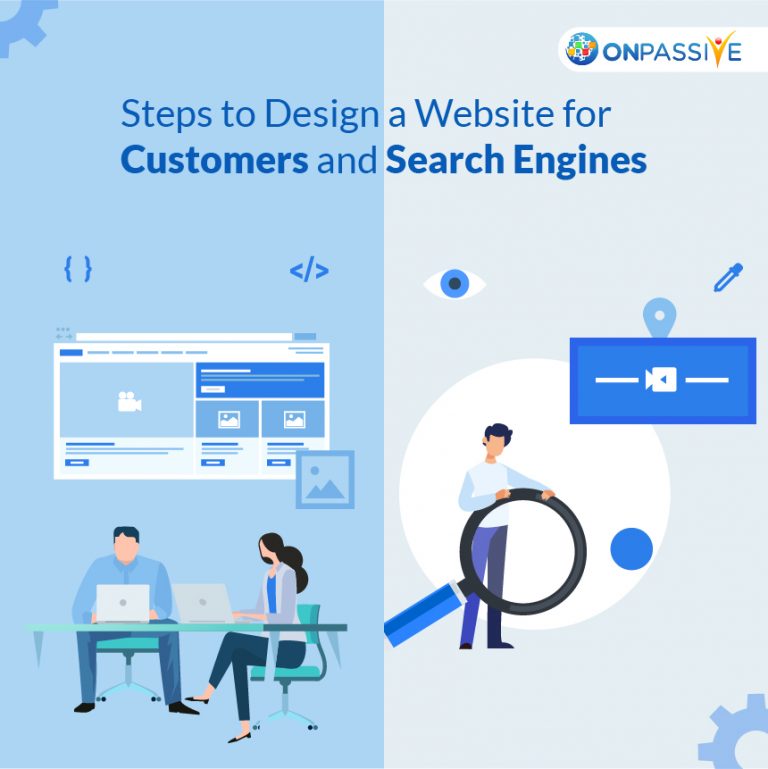
A website design is vital for both user experience and organic search performance. Your website’s design affects its ability to rank well for relevant terms and its ease of usage for your visitors.
Website design usually refers to the user experience aspects rather than software development and is a blend of different variables such as font, images, speed, SEO, responsiveness etc.
Few aspects are essential than others when designing your website. A good web design should consist of basics such as color, space, navigation, typography, positioning, mobile ability, and usability. A good website impacts how the audience perceives your brand and helps you lead on your page.
Steps to Design a Website for Customers and Search Engines
Web designers and business owners should consider many aspects before deciding what content and features should be added to their website. Many variables like animation, color, button designs, search engine optimization, user flow, copy and messaging, photos, videos, and page performance play a crucial role in how the overall design and user experience come together.
The following are few steps that can be implemented to design a website that both your customers and search engines will love:
Make your Website Customer-centric
Most business owners tend to design a website that is appealing to them instead of trying to figure out what design would be appealing to customers. The way customer perceives your products can be different from the way you perceive them.
Before designing a website, make sure to ask yourself why customers should think to visit your website? What would they like to see on your website? and why should he buy my product? Finding answers to these questions will enable business owners to create a customer-centric and appealing website to customers.
Properly Manage images on your site;
With much text on your site, images are also an essential part to include. A good quality image can add freshness to your site and engage viewers with well-written content.
Image size plays a crucial role in controlling your site speed. Since high-quality images take a long time to load, businesses should consider compressing image size through software or plug-in without compromising the load time.
- Create an appealing site structure
Businesses need to ensure that the site structure is not rigid and websites are built with internal and external links. A good website has a precise site structure. Although Google bots are intelligent in finding content from your website, they still lack human perception.
Links should be working appropriately because they help search engine crawlers determine content relevance. A broken link can result in a severe drop in website ranks. Therefore, site structuring provides an equal effect on both customers and search engines.
- Include Quality Content
A website with an appealing design but low-quality content can never attain the desired ranking on search engine results. Therefore, businesses need to focus on gaining attention through articles and blogs without compromising the quality of their website’s content.
Business owners should ensure that the content is valuable to customers and be clear on what are they trying to achieve through their blog posts. Quality content plays a crucial role in engaging your audience and get you higher search engine ranks.
Secure your site
According to Google guidelines, all websites must install security protocols like SSL certificates, and Google will not rank any websites that don’t have an SSL installed.
SSL certificates help businesses gain customer trust and search engines and provide security against cybercriminals or other malware attacks.
By following these steps, business owners can create a website appealing to both customers and search engines while improving their bottom line rankings.
Conclusion
All businesses must create and maintain a balance between search engine algorithms and customer satisfaction. Since both customers and search engines are linked to each other, search engines always look for useful websites to improve customer experience and add value. Therefore, a well-designed website will please search engine crawlers while enhancing customer experience.


